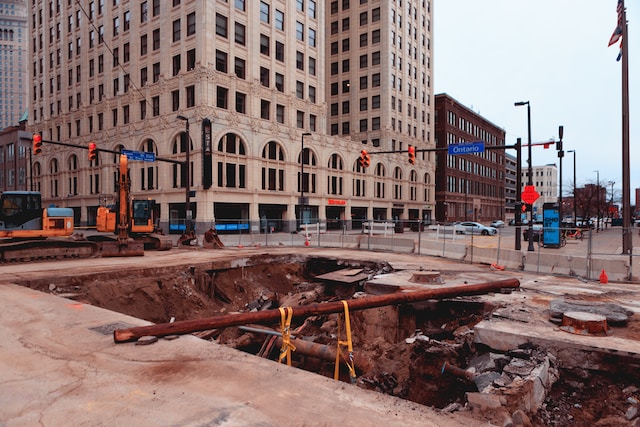Trenchless methods like pipe bursting and cured-in-place pipe lining (CIPP) require less labor and equipment. Therefore, they can be completed quicker than traditional excavation-based repair techniques.
Leaks and sewage infiltration from damaged sewer lines can pollute soil and water sources. Trenchless technology prevents contamination by minimizing the displacement of surrounding materials.
Environmentally-Friendly
Trenchless sewer pipelining is an eco-friendly alternative to traditional excavation-based repairs. It can save property owners money while reducing environmental impact and minimizing the risk of sewage leaks in the surrounding soil and waterways.
It also helps to protect the integrity of nearby trees and bushes since plants and animals will not be disturbed during the repair process. This is because trenchless methods like CIPP pipe lining or pipe bursting can be performed without digging up the surrounding landscape.
Instead, the technician can access the problematic pipes through an existing access point, such as a cleanout. The lining material used in the repair process is non-toxic and doesn’t pollute the soil or groundwater. It is also made with an environmentally friendly manufacturing process. The same goes for the pipe made from an eco-friendly epoxy resin. This makes the entire system an eco-friendly solution from manufacture to usage. You can browse https://sandiegopipelining.com/ to get more info about trenchless technology. Trenchless technology also helps to minimize the use of heavy machinery, which cuts down on carbon emissions and energy consumption.
Saves Landfill Space
Traditionally, sewer line repairs and replacements involve digging large trenches to access and destroy the old damaged pipes. This ruins landscaping, destroys driveways and sidewalks, and requires large machinery that produces pollution. On the other hand, trenchless sewer pipelining only disturbs the ground’s surface where the work is taking place.
Pipes in the trenchless process are relined with a durable liner that creates a new pipe within the old one (cured-in-place). This technique uses seamless PVC pipes, which do not suffer from corrosion or rust and last for an extended period.
Commercial properties have a lot on the line during a major repair, such as a trenchless sewer repair. Businesses can be shut down and profits lost if plumbing is not functioning properly. Trenchless sewer pipelining minimizes the disruption to business operations, keeping them open and allowing employees to work without interruption. This helps to maintain profitability and customer satisfaction.
Prevents Soil and Water Contamination
During traditional sewer repair, heavy excavation equipment can cause soil erosion and contaminate the surrounding area with harmful toxins. These toxins can also be released into the air, potentially affecting people and animals. Trenchless sewer pipelining prevents this by avoiding the use of excavating equipment.
In addition, the CIPP lining process creates a smooth inner surface that prevents debris buildup and blockages. This allows the sewer pipes to function properly and improves their overall performance.
Trenchless pipe lining can fix many issues that would otherwise require digging, including cracked or broken pipes, backed-up or clogged sewer lines, and improper pitch. It takes less time than traditional repair methods and protects your yard, sidewalk, driveway, and other surfaces during repairs. This means you can save money and return to your daily routine faster. It’s also safer for sewer repair technicians, as there is less risk of accidental exposure to hazardous waste. This is a significant benefit that many homeowners appreciate.
Reduces Waste Generation
During traditional sewer repair or replacement, whole sections of the existing pipe are removed and sent to landfills, which creates unnecessary waste. The trenchless lining uses a compact hydraulic machine called a “pipe bursting head” to rip through the old pipe and pull a new liner into its place. The new liner is a durable epoxy-saturated liner inserted inside the old pipeline to restore its structural integrity.
The trenchless process doesn’t require yard excavation or sidewalk destruction, saving homeowners time and money. Additionally, lining your pipes can extend their lifespan and is less likely to corrode than unlined pipes. The environmentally-conscious trenchless method also reduces the need for heavy machinery that produces greenhouse gases, reducing carbon footprints.

















